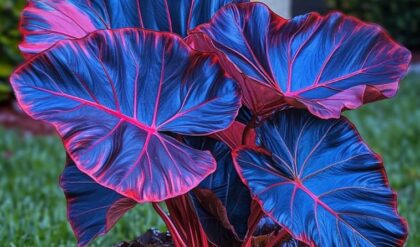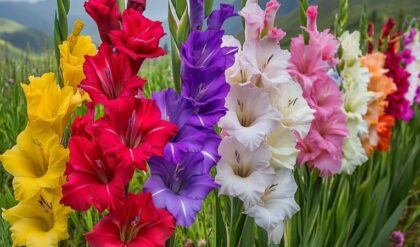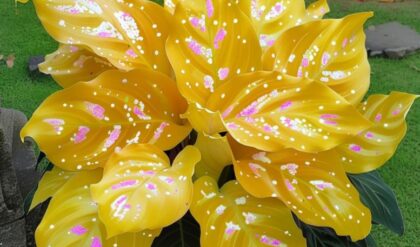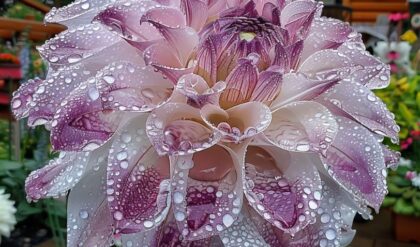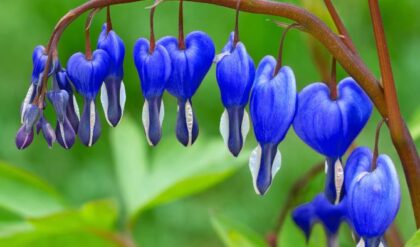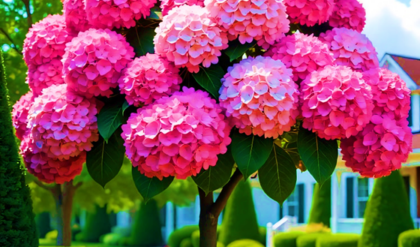The elephant ear plant—a stunning tropical perennial known for its large, heart-shaped leaves—commands attention in any garden or indoor space. Scientifically encompassed within the genera Colocasia, Alocasia, and Xanthosoma, these plants offer a rich tapestry of textures and colors that can transform ordinary landscapes into lush paradises. What lies beneath their striking beauty is a fascinating blend of botanical uniqueness and cultural significance.
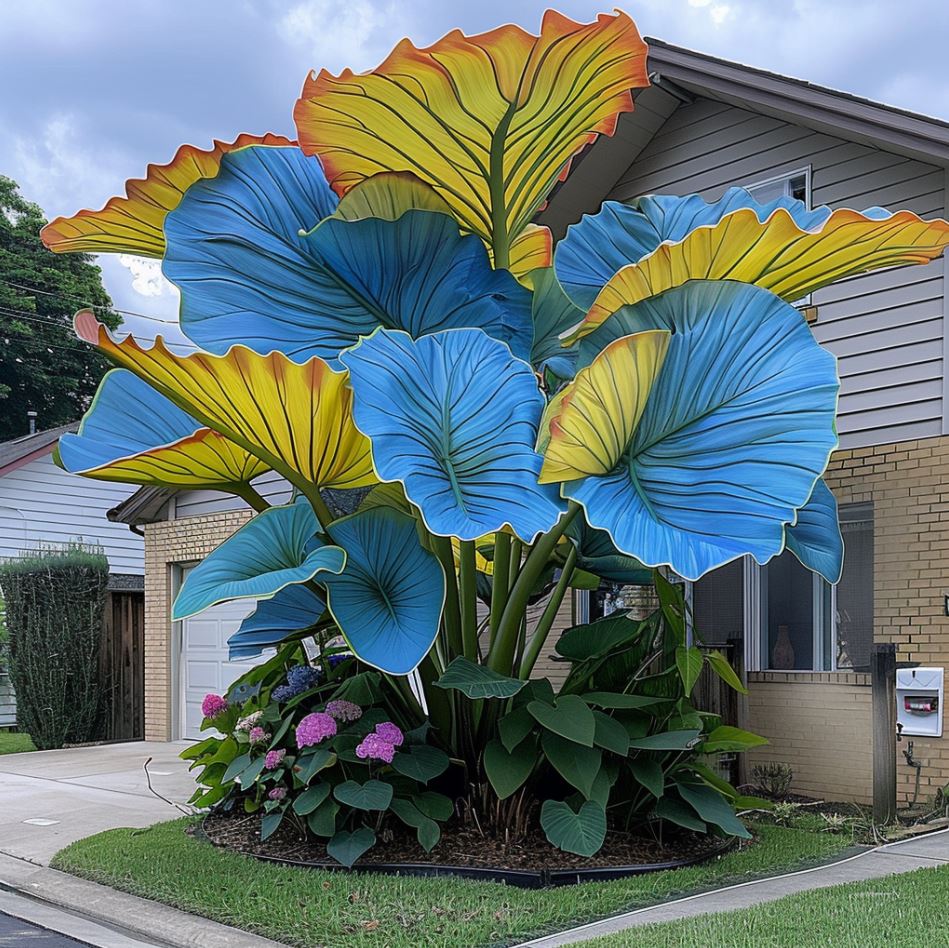
The Biology Behind the Beauty
Varieties and Characteristics
One cannot delve into the world of elephant ears without acknowledging the impressive diversity they encompass. With over 80 distinct varieties boasting unique leaf patterns and sizes, there’s an elephant ear for every type of gardener or interior decorator. Some varieties even present variances in color, with vibrant greens contrasting against deep purples and almost black shades, while others exhibit delicate white veins lacing through their foliage. This striking visual appeal not only pleases the eye but also encourages developers to explore these plants for creative landscaping solutions reminiscent of exotic climates.
The variety of elephant ear plants is truly astounding. From the classic Colocasia esculenta with its broad, deep green leaves to the striking Alocasia ‘Polly’ with its iridescent, almost metallic foliage, each cultivar offers a distinct personality. Some varieties, like the Xanthosoma ‘Lime Zinger,’ showcase a delicate, lace-like texture, while others, such as the Colocasia ‘Black Magic,’ exude a dramatic, almost haunting presence with their inky black hues. This diversity allows gardeners and designers to curate truly unique and captivating compositions, transforming even the most ordinary spaces into verdant, tropical-inspired sanctuaries.
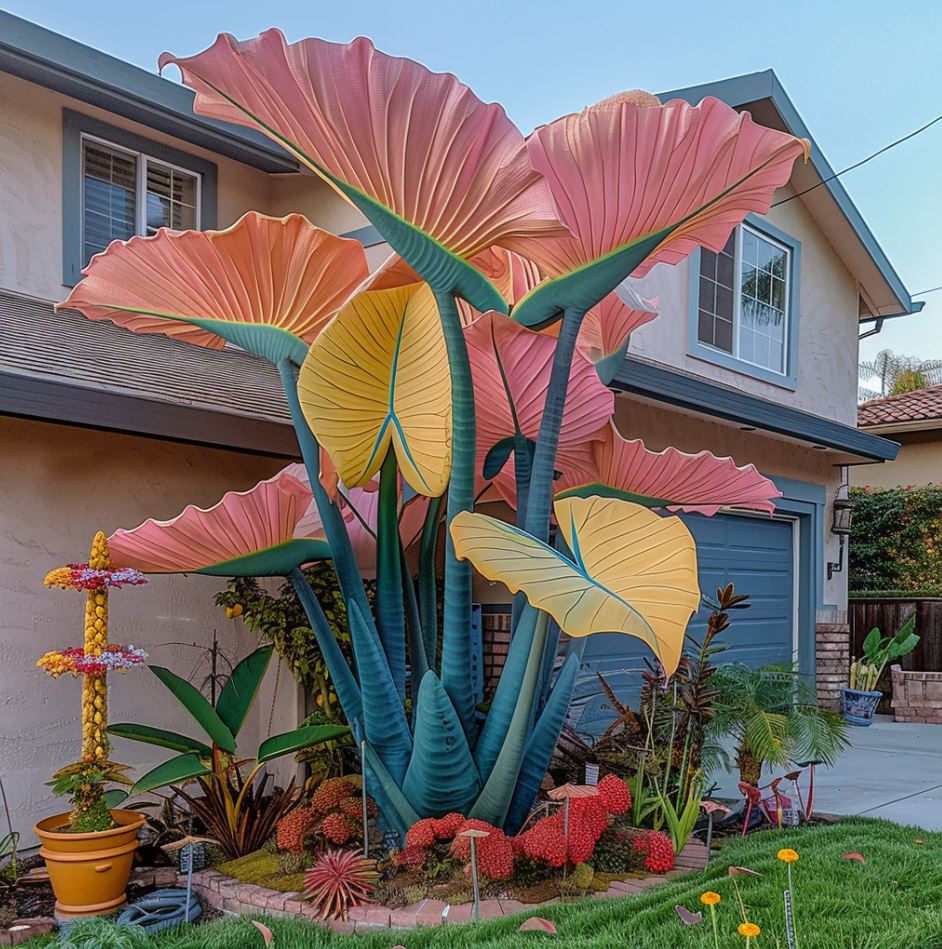
Growth Habits and Environment
Understanding the growth habits of elephant ears can yield insights into their care needs. These plants thrive in rich, moisture-retentive soil and typically prefer sunny environments, mirroring their native tropical habitats where sunlight reigns. However, gardeners must be mindful; while they flourish in warm conditions, fluctuations in temperature could lead to unexpected outcomes. For instance, exposed to frost, these plants can suffer, leading one to consider location—perhaps closer to foundational walls that radiate warmth—fostering discussions around microclimates in gardening.
Elephant ear plants are true tropical giants, with some varieties reaching up to 6 feet in height and spreading out to an impressive 8 feet wide. Their massive, heart-shaped leaves can measure over 3 feet in length, creating a truly awe-inspiring visual impact. These plants are native to regions with warm, humid climates, such as Southeast Asia, the Caribbean, and parts of South America. In their natural habitats, they often thrive in moist, shaded areas along riverbanks and in dense forest understories.
Successful cultivation of elephant ear plants requires a deep understanding of their environmental preferences. They excel in well-draining, nutrient-rich soil that retains moisture but does not become waterlogged. Exposure to bright, indirect sunlight is ideal, as direct, intense sunlight can scorch their delicate foliage. In cooler climates, these plants may need to be grown in containers and brought indoors during the winter months to protect them from frost and freezing temperatures.
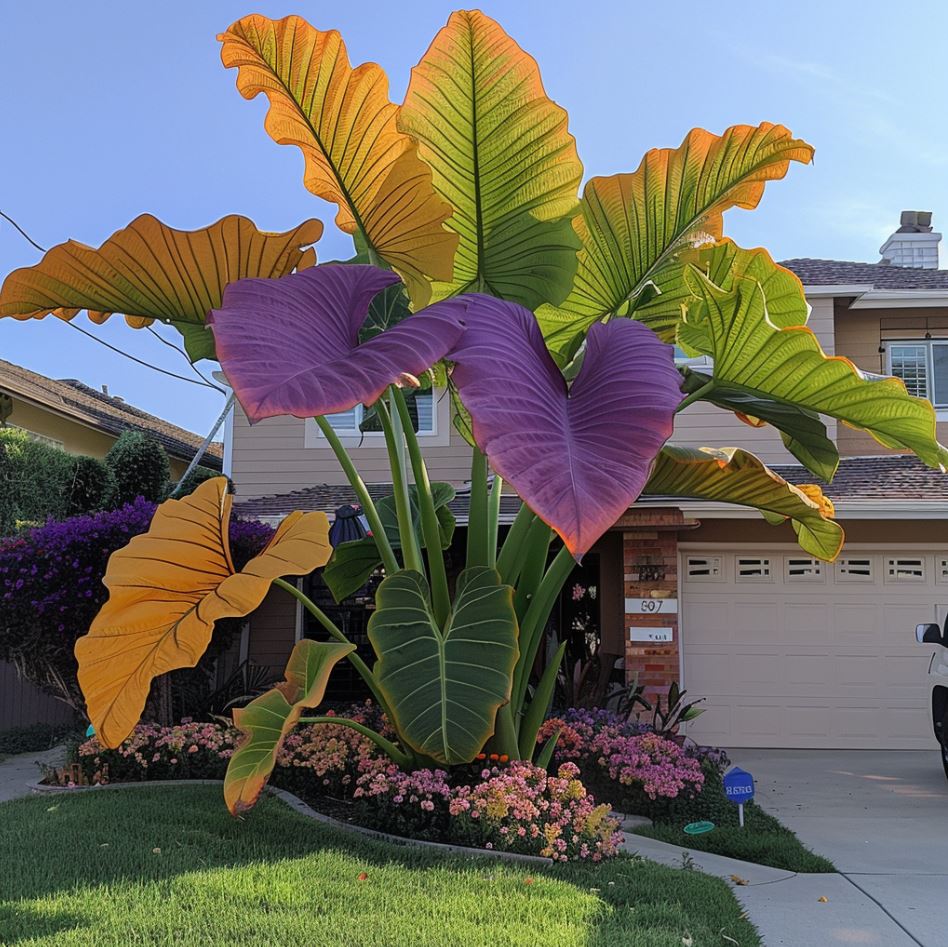
Perspectives on Care and Cultivation
Care Tips
Caring for elephant ears might initially seem daunting, yet it offers an engaging experience. Regular watering, complemented by occasional fertilization, facilitates robust growth. Adapting one’s methods according to individual plant varieties can even become a form of experimentation—where every mistake leads to new discoveries about one’s gardening style. Additionally, as these plants enter dormancy in colder climates during fall, the opportunity arises to consider indoor propagation. Transitioning them inside can spin a narrative of survival, symbolizing the quest to evolve amidst seasonal challenges.
Watering is crucial for the health and vitality of elephant ear plants. They prefer consistently moist, but not waterlogged, soil. Gardeners should water their plants regularly, ensuring the soil dries out slightly between waterings. During hot, dry periods, the plants may need more frequent watering to prevent the leaves from wilting. Fertilization with a balanced, slow-release fertilizer can also help support the plant’s vigorous growth, especially during the growing season.
Elephant ears are relatively easy to propagate, providing opportunities for gardeners to expand their collections or share their plants with others. Dividing the rhizomes, or underground stems, is a common method of propagation. In the fall, as the plants enter dormancy, the rhizomes can be dug up, divided, and replanted or shared with fellow gardeners. Indoor propagation during the winter months can also be explored, allowing gardeners to maintain their beloved elephant ears even in colder climates.
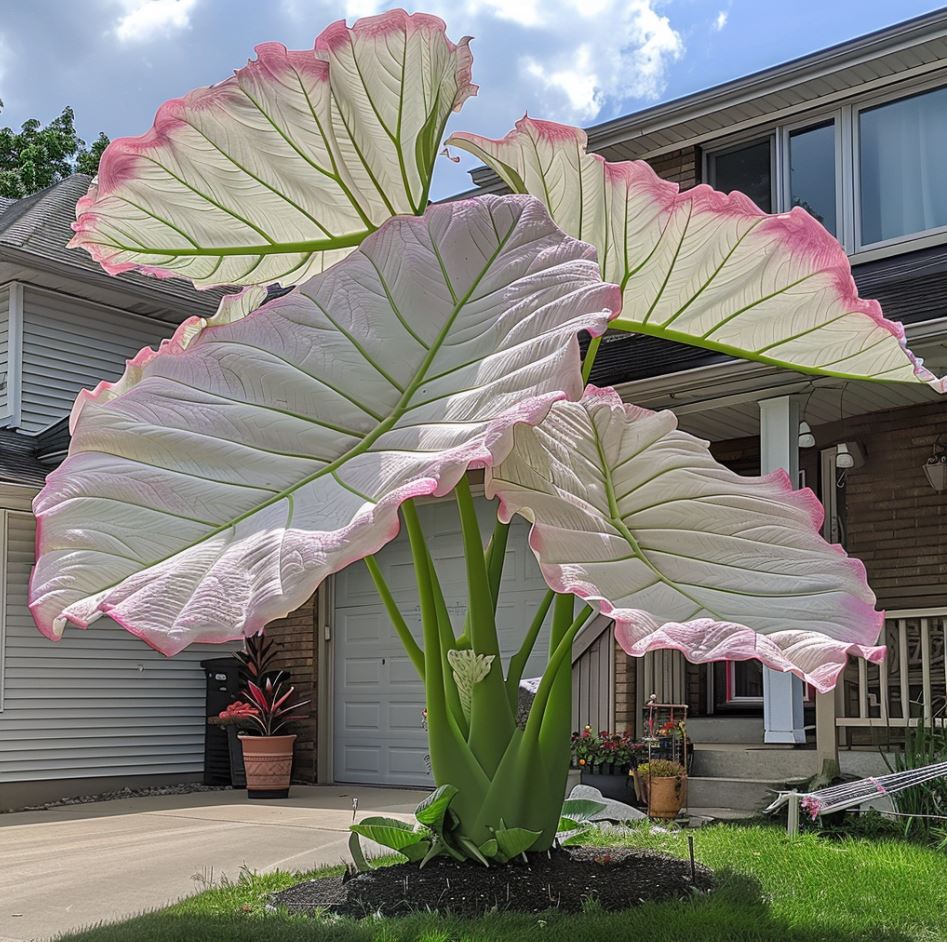
Transitioning to Indoor Cultivation
As the seasons change, elephant ear plants may require a transition to indoor cultivation to ensure their survival. In regions with cold winters, the plants will need to be brought indoors before the first frost. This process can be an engaging and rewarding experience, as gardeners must carefully monitor their plants’ needs and adapt their care strategies to the new environment.
When bringing elephant ears indoors, it is essential to gradually acclimate the plants to the lower light levels and drier air found in most indoor settings. Placing them in a bright, sunny spot near a south-facing window can help them adjust. Maintaining consistent soil moisture and providing occasional misting can also help mimic the humid conditions they enjoy outdoors.
During the winter months, elephant ears will typically enter a dormant phase, slowing their growth and requiring less frequent watering. Gardeners should be mindful not to overwater their indoor plants, as this can lead to root rot and other issues. Allowing the soil to dry out slightly between waterings can help prevent these problems and ensure a successful transition back to the garden in the spring.

Implications for Ecosystems
Interestingly, the presence of elephant ear plants in gardens transcends mere aesthetics; they serve as ecological players too. Their broad leaves can provide habitat for various insects and birds, making them integral to broader ecosystem health. Imagine supporting local biodiversity right from your backyard—elephant ears can effectively contribute to your landscape becoming a hub for local fauna.
The large, lush foliage of elephant ear plants creates a microhabitat that attracts a wide range of beneficial insects and pollinators. The leaves can provide shelter and nesting sites for small creatures, while the nectar-rich flowers attract hummingbirds, bees, and butterflies. By incorporating elephant ears into your garden, you are effectively creating a sanctuary for local wildlife, contributing to the overall health and biodiversity of your ecosystem.
Beyond their role in supporting insect and avian life, elephant ear plants can also play a part in soil health and nutrient cycling. As the large leaves naturally decompose, they return valuable organic matter and nutrients to the soil, enriching the growing medium for other plants. This process helps to maintain the fertility and structure of the soil, creating a more sustainable and resilient garden ecosystem.
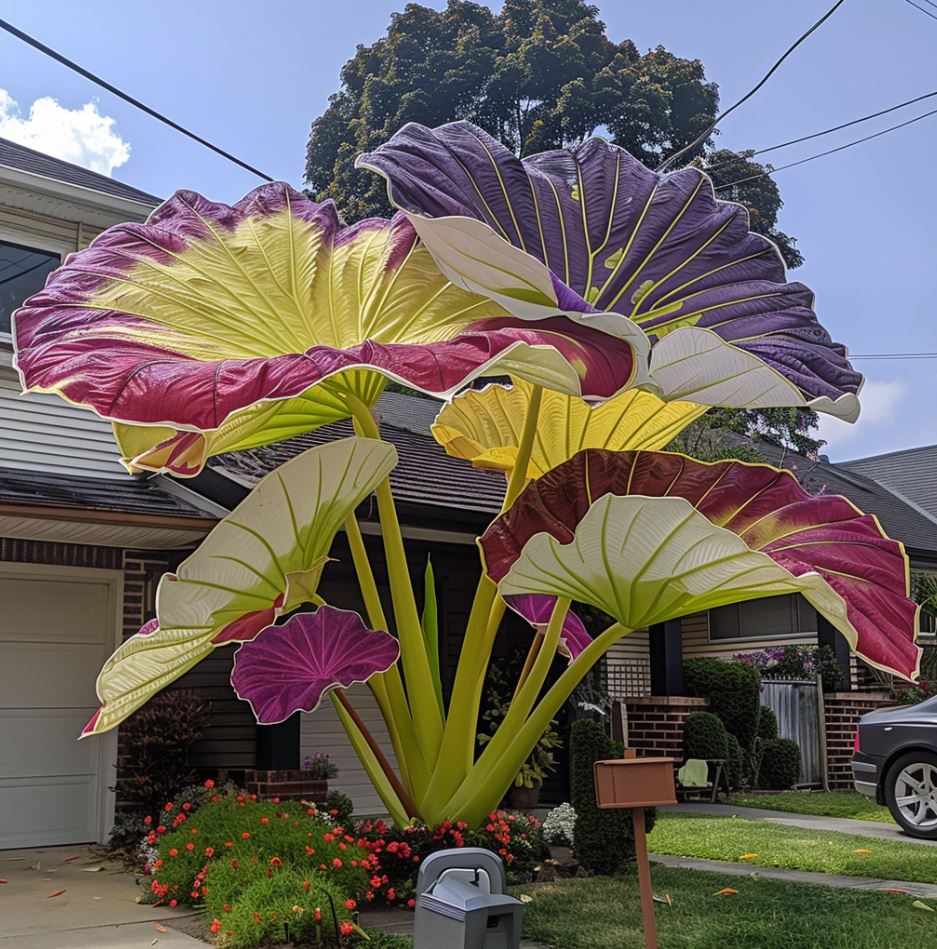
Cultural Significance
Historical Context
Beyond their environmental impact, elephant ears carry rich cultural stories. Originating from regions like Ceylon (now Sri Lanka), Tahiti, and Eastern Australia, they traveled across the world, evolving into symbols of tropical elegance in urban settings. Gardening enthusiasts often cite the link between nature and mental well-being, and extending this thought, one can argue that cultivating such exotic flora incorporates history, nostalgia, and global interconnectedness into personal spaces.
The elephant ear plant has a fascinating history that spans continents and civilizations. These towering, tropical plants have been cultivated for centuries, with evidence of their use dating back to ancient cultures in Southeast Asia, the Pacific Islands, and parts of Africa. In many of these regions, the leaves, stems, and tubers of elephant ear plants were an important food source, contributing to the nutritional and cultural sustenance of local communities.
As global trade and exploration expanded, the popularity of elephant ear plants spread to new parts of the world. They were often transported by seafaring explorers and traders, becoming symbols of the exotic and the unfamiliar. In the 18th and 19th centuries, the introduction of these tropical giants to European and North American gardens sparked a fascination with the “tropics” and a desire to recreate those lush, verdant landscapes in temperate climates.
Today, the elephant ear plant continues to hold cultural significance, often evoking a sense of nostalgia and connection to the natural world. For many gardeners and plant enthusiasts, cultivating these plants represents a way to bring a touch of the exotic and the unexpected into their personal spaces, fostering a deeper appreciation for the diversity and beauty of the natural world.
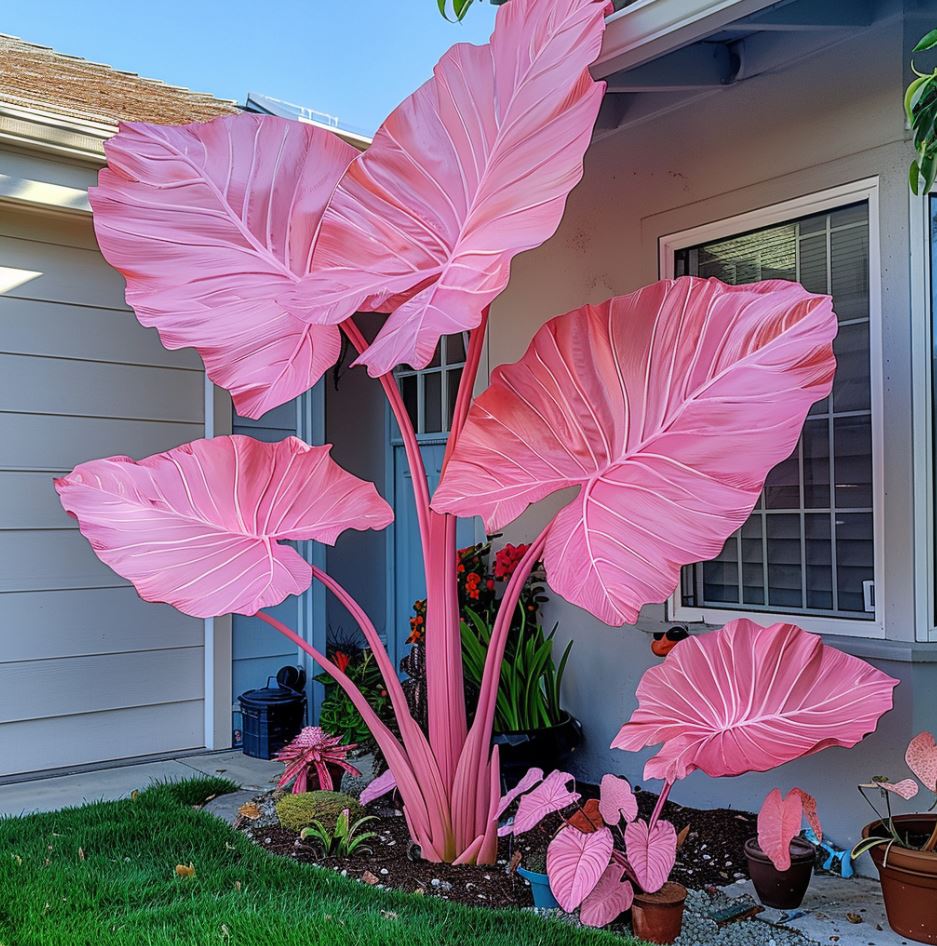
Aesthetic Versatility
In a more modern context, elephant ear plants lend themselves beautifully to contemporary design. As boho-chic indoor plants or dramatic outdoor specimens, they can act as statement pieces in minimalist designs. Their versatility encourages imaginative placements—from enhancing serenity in meditation spaces to providing dynamic backdrops for social gatherings, each leaf tells a story, invoking stunning social interactions around the beauty of nature.
The large, bold leaves of the elephant ear plant make it a striking and versatile addition to any design aesthetic. In contemporary indoor spaces, these plants can serve as stunning focal points, adding a touch of lush, tropical flair to minimalist or boho-chic decor. Their dramatic foliage can offset clean lines and neutral color palettes, creating a captivating contrast that draws the eye and invites closer inspection.
Beyond the confines of indoor living spaces, elephant ear plants excel as dramatic outdoor specimens, enhancing the visual interest and sense of tranquility in gardens, patios, and other landscaped areas. Their towering presence can create a sense of seclusion and privacy, while their broad leaves provide dappled shade and a lush, jungle-like ambiance. Gardeners and landscape designers can experiment with creative placements, using elephant ears to frame gathering areas, accentuate water features, or even as statement pieces in minimalist, sculptural garden designs.
The aesthetic versatility of the elephant ear plant encourages homeowners, interior designers, and landscape architects to explore new and innovative ways to incorporate these tropical giants into their creative visions. Whether used as a bold centerpiece or as a harmonious component of a larger design scheme, the elephant ear plant has the power to transform ordinary spaces into enchanting, nature-inspired sanctuaries that captivate the senses and inspire mindful engagement with the natural world.
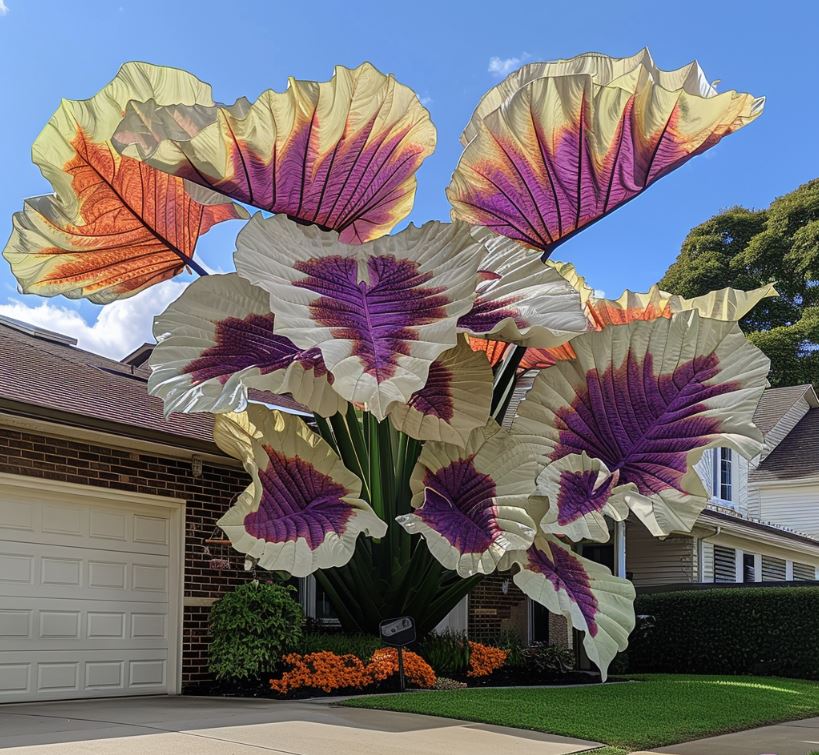
Conclusion
As we explore the elephant ear plant, we unearth not just a plant but a reflection of a larger narrative tied to nature, care, and culture, inviting us to think deeply about our relationship with the green world around us. From their striking visual appeal to their ecological significance and cultural history, these tropical giants offer a multifaceted journey of discovery, inspiring gardeners, designers, and nature enthusiasts alike to cultivate a deeper appreciation for the wonders of the natural world.
